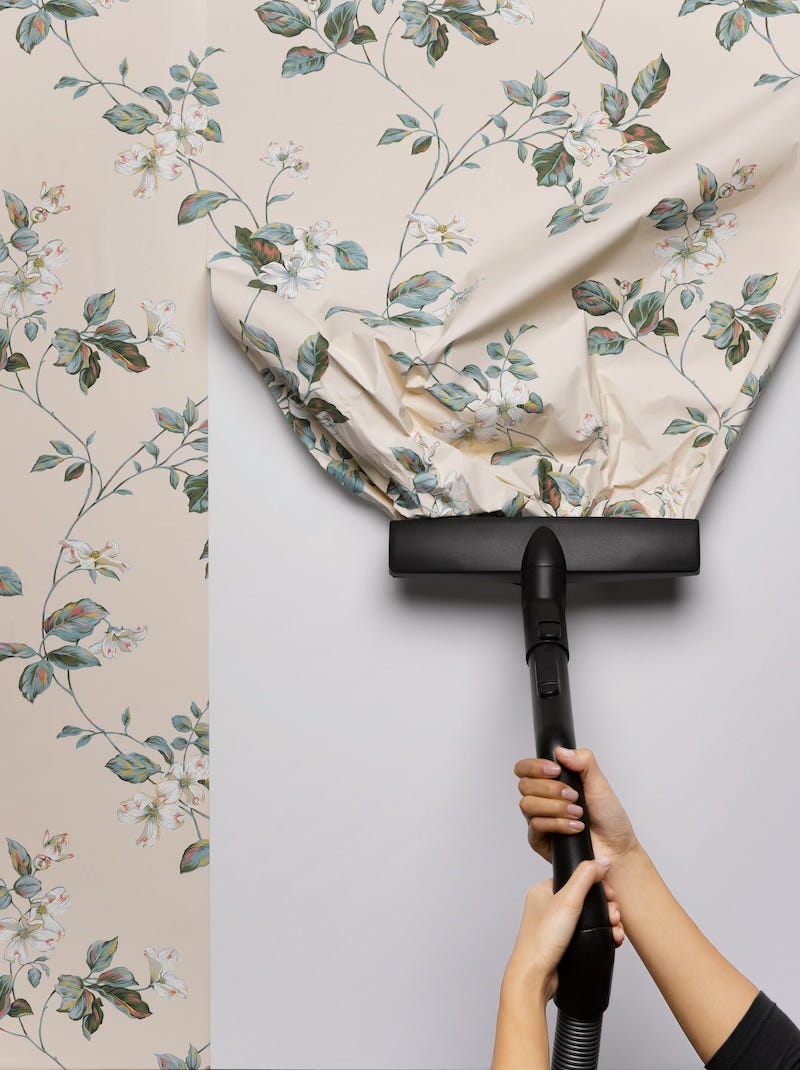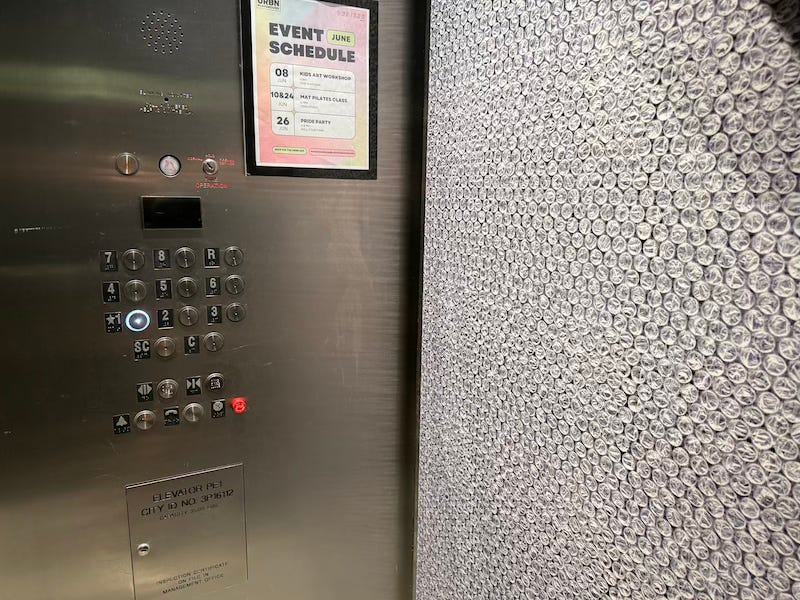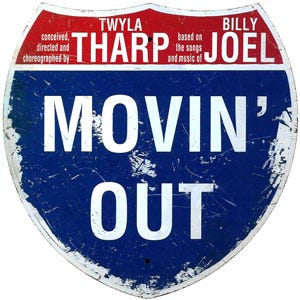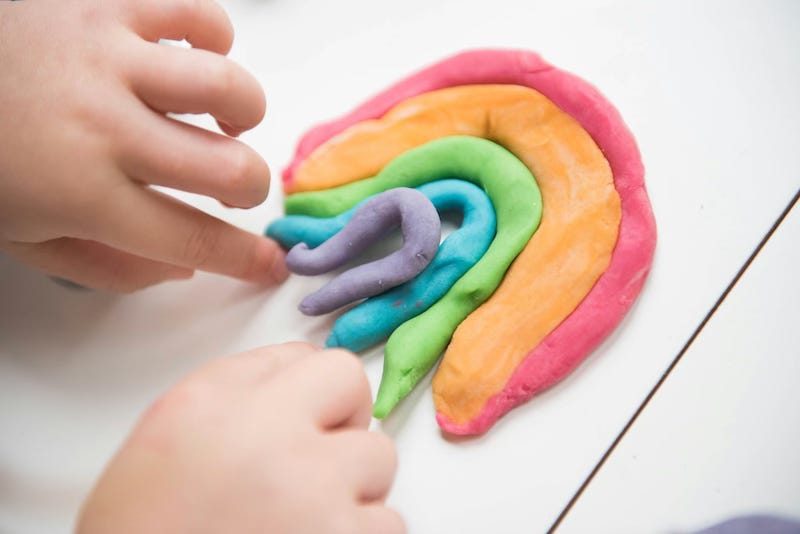It’s not like I’d ever forget the moment and yet, I’m not sure why, but only midway through writing this did it actually come back to my awareness.
Namely, to quote another legendary Broadway show, the fact that I was “in the room where it happened.”
I’ll reveal all, but first I have to set the stage properly.
This month I’ve been exploring the theme of Out of The Box—meditation HERE.
Last week I shared how genius choreographer Twyla Tharp declared, “I start every dance with a box.”
In her book The Creative Habit, she even goes further stating:
Before you can think out of the box,
you have to start with a box.

For Movin’ Out—the jukebox musical she created based on the songs of Billy Joel and for which she won a Best Choreography Tony—Twyla Tharp filled 12 boxes with material.
In The Creative Habit, she describes those boxes as the fertile soil she knows she can always return to for inspiration, particularly if she’s lost her bearings mid-project.
We’re reading her book HERE in the Transformation Book Club this month, and you can join us if you like.
I got so lost in her description of her process behind Movin’ Out that I almost forgot to mention my own experience of it—one that truly involved stepping out of the box.
But first … speaking of things involving boxes.

In 1957, inventors Alfred Fielding and Marc Chavannes were trying to create a textured plastic wallpaper.
Their method: seal two shower curtains together with air bubbles trapped inside.
The result? Something no one actually wanted on their walls… but somehow also oddly satisfying to touch.
Definitely not quitters, the two inventors tried to rebrand it as an insulation for greenhouses.
That idea had some merit—their failed wallpaper was transparent and could trap heat — but again, no one was buying it.
Three years later, they finally found their sweet spot.
IBM had released their 1401 computer—a delicate machine that required careful shipping—and this “Bubble Wrap” proved perfect for cushioning fragile electronics.
IBM became their first big client, and decades later their Sealed Air Corporation is now a multi-billion dollar company.
And — in a final out of the box plot twist — I’m inspired to share that my most-recent hipster apartment complex decorated the interior of its elevator with faux-bubble wrap beneath plexiglass, probably unaware of the invention’s reinvented origins.

Back to Movin’ Out on Broadway…
It was another life, in fact almost two decades ago.
I was writing while teaching yoga.
It was a period where I was also seeing a lot of theater, inspired in part because I was also teaching four-time (then) Tony Winner Terrence McNally three times a week.
Terrence had a lot of strong opinions on what I should see, and given the Bohemian chaos of my life then, that often meant I barely got it together to attend the closing night of an important show.
Such was the case with Twyla Tharp’s Movin’ Out, which I saw on December 11th, 2005, for its final performance—a night I’ll never forget.

It’s not only Bubble Wrap that’s on my mind.
Next month, I’ve been invited to give another keynote address for a wellness conference, the theme of which has some synergy related to Out of The Box.
Another example I may incorporate in my talk is that in the 1930s and 1940s, a non-toxic, reusable putty was created by Kutol Products in Cincinnati.
Its original purpose? To clean soot from wallpaper.
This was a different era—one where coal heating was common and wallpaper was expensive—but by the 1950s, things had changed.
With the rise of natural gas, fuel oil, and eventually electric heating—and vinyl wallpaper on the rise—sales plummeted.
Enter Kay Zufall, a nursery school teacher (and sister-in-law of the company’s new part-owner) who noticed her students loved playing with the compound.
Thinking Out of The Box, she brilliantly suggested rebranding it as a children’s toy.
With added scent and color, Play-Doh was reborn in 1956—and after being promoted by Captain Kangaroo on his TV show, its sales skyrocketed.
Now owned by Hasbro, over 3 billion cans of Play-Doh have been sold worldwide, a tribute of what can happen when one is free enough to think outside the box.

Back (again) to Broadway…
I’d been a Twyla Tharp mega fan since seeing The Upper Room right after college, so I wasn’t surprised I found Movin’ Out to be truly extraordinary.
Yet no one in the audience that night was prepared for what happened next.
At the end of the play, during a very intense burst of final performance curtain call energy, Billy Joel—who was in the audience, watching like everyone else—suddenly walked onstage, unannounced.
It was a true “rock star” move: unrehearsed, unscripted, and electric.
The audience and the cast were genuinely surprised, even astonished.
Joel then performed “Miami 2017 (Seen the Lights Go Out on Broadway)” (which he wrote in 1976), ad libbing a line to the producers.
Next he led the band in “You May Be Right”, jamming with them as the cast watched, visibly stunned and elated.

Twyla makes one thing clear, almost as a warning:
The box is not a substitute for creating.
Indeed, I often advise my coaching clients (info HERE) to use this kind of technique—making it clear that it counts as work, but it is not THE work.
As Tharp writes:
The box doesn’t compose or write a poem or create a dance step. The box is the raw index of your preparation. It is the repository of your creative potential, but it is not that potential realized.
It is the container, in other words—not the content.

I’m so glad Terrence nudged me to grab a ticket to that final Movin’ Out performance, little knowing that it would transcend and circle back on itself.
I haven’t fully conquered a new metaphor, but in theater and film, they speak of “breaking the fourth wall.”
That extraordinary moment with Billy Joel was so much more than that.
A rock legend crashing his own jukebox musical for a one-time-only sendoff—this was a beyond an “out of the box” moment.
Between Twyla Tharp and Billy Joel, this was about filling the box entirely, then unwrapping it—bubble wrap and all—right before our very eyes.
It was as good a magic trick as I’ve ever seen, leaving behind a multi-layered “out of the box” memory, one that’s impossible to forget.
Tell A New Story | Transform Your Life

